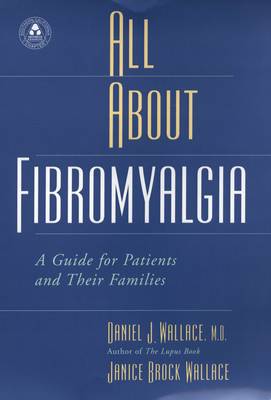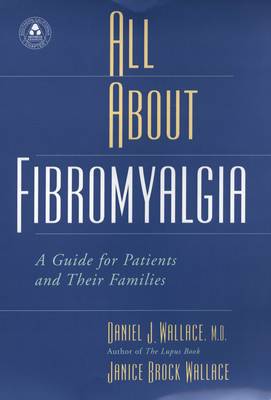
- Afhalen na 1 uur in een winkel met voorraad
- Gratis thuislevering in België vanaf € 30
- Ruim aanbod met 7 miljoen producten
- Afhalen na 1 uur in een winkel met voorraad
- Gratis thuislevering in België vanaf € 30
- Ruim aanbod met 7 miljoen producten
All about Fibromyalgia
A Guide for Patients and Their Families
Daniel J Wallace, Janice Brock Wallace
Hardcover | Engels
€ 117,95
+ 235 punten
Omschrijving
This year, six million Americans--most of them women--will go to their doctors, complaining of an illness they have no name for. The majority will be turned away or treated for depression; the few who persist will go to an average of four doctors before they receive the correct diagnosis: fibromyalgia.
In their earlier Making Sense of Fibromyalgia, noted medical writer Janice Wallace and Dr. Daniel Wallace, a leading expert on this disorder, provided a comprehensive guide--for both patients and professionals--to this little known and poorly understood syndrome. Now, in All About Fibromyalgia, the Wallaces provide a thoroughly revised and updated version of that highly successful volume, incorporating a wealth of new information. This edition provides the current understanding of the disease as well as the latest drug treatments--all laid out in clear and accessible language.
As in the previous volume, the authors provide a detailed, yet clear explanation of the disease. Fibromyalgia, they explain, is a form of chronic neuromuscular pain, a pain-amplification syndrome brought on by abnormal interactions between hormones, the immune system, neurotransmitters, and the autonomic nervous system. Sometimes the syndrome occurs spontaneously; in most cases, the authors write, it is associated with trauma, stress, such conditions as lupus and hypothyroidism, and over forty microbes, from hepatitis to Epstein-Barr to Lyme disease.
Drawing on actual cases to illustrate their points, the authors help break through the isolation that patients often feel when doctors misdiagnose or simply ignore their symptoms. All About Fibromyalgia addresses a desperate need for information on this disease and offers reassurance to patients and their families.
In their earlier Making Sense of Fibromyalgia, noted medical writer Janice Wallace and Dr. Daniel Wallace, a leading expert on this disorder, provided a comprehensive guide--for both patients and professionals--to this little known and poorly understood syndrome. Now, in All About Fibromyalgia, the Wallaces provide a thoroughly revised and updated version of that highly successful volume, incorporating a wealth of new information. This edition provides the current understanding of the disease as well as the latest drug treatments--all laid out in clear and accessible language.
As in the previous volume, the authors provide a detailed, yet clear explanation of the disease. Fibromyalgia, they explain, is a form of chronic neuromuscular pain, a pain-amplification syndrome brought on by abnormal interactions between hormones, the immune system, neurotransmitters, and the autonomic nervous system. Sometimes the syndrome occurs spontaneously; in most cases, the authors write, it is associated with trauma, stress, such conditions as lupus and hypothyroidism, and over forty microbes, from hepatitis to Epstein-Barr to Lyme disease.
Drawing on actual cases to illustrate their points, the authors help break through the isolation that patients often feel when doctors misdiagnose or simply ignore their symptoms. All About Fibromyalgia addresses a desperate need for information on this disease and offers reassurance to patients and their families.
Specificaties
Betrokkenen
- Auteur(s):
- Uitgeverij:
Inhoud
- Aantal bladzijden:
- 272
- Taal:
- Engels
Eigenschappen
- Productcode (EAN):
- 9780195147537
- Verschijningsdatum:
- 15/04/2002
- Uitvoering:
- Hardcover
- Formaat:
- Genaaid
- Afmetingen:
- 170 mm x 232 mm
- Gewicht:
- 508 g

Alleen bij Standaard Boekhandel
+ 235 punten op je klantenkaart van Standaard Boekhandel
Beoordelingen
We publiceren alleen reviews die voldoen aan de voorwaarden voor reviews. Bekijk onze voorwaarden voor reviews.










